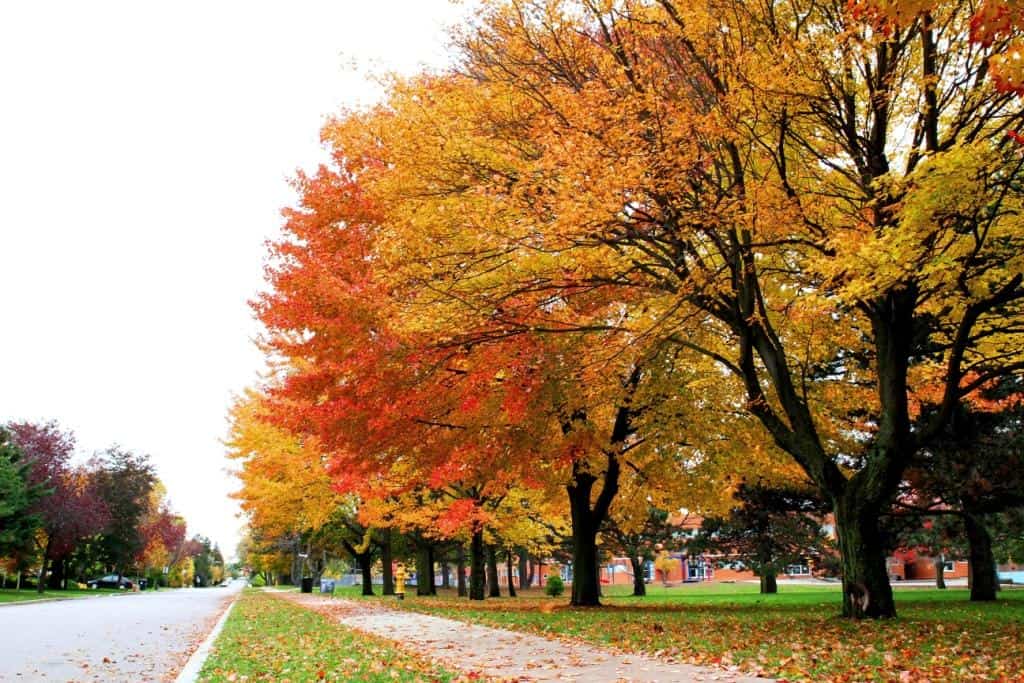
I’ve written and read lots about the importance of returning leaves to the earth where they will help develop friable soil with pore spaces for the exchange of oxygen and the drainage of water. Also, decomposing leaves contribute to plant nutrition and health. And further, a four-inch (10-cm) mulch of autumn leaves over exposed soil and around plants helps maintain moisture in the soil and prevent evaporation.
But foremost (and not so often cited), is that leaves are what worms eat, and most worms are important inhabitants of good soil. A healthy population of worms in garden soil is comparable to the presence of cows in a pasture. They’re grazing on organic material and depositing nutrient-waste whenever the soil is unfrozen. Worms produce castings, a nutrient-rich waste that’s ideal food for plants. We need to remember that wherever our gardens are located, the land has been in use for no more than 300 years, at the most. Before that, worms provided the fertilizer, and it was sufficient to grow majestic forests. Of course, we will continue to feed our plants, but we mustn’t discount the nutritional importance of worm contributions. [Editor’s note: There is new research that shows the burgeoning population of earthworms, especially night crawlers, in forests is now causing damage to the soil ecosystem.]
The way to get a thriving worm population is the same way to get raccoons — feed them. Allowing fallen tree and shrub leaves to remain on the soil surface is a dinner invitation for worms. They feed mainly from dusk to dawn, and will extend from their burrows and feel around (because they’re blind) for any leaf material they can reach. If you sit on your doorstep after dark on a quiet night, you may hear a rustling of dried leaves on the ground — the sound of worms grasping leaves. If this is hard to believe, just try it.
I’m mentioning this as the leaves fall, just in case anyone in your household needs convincing to allow them to remain on bare soil. The urge to tidy up and collect fallen leaves is overwhelming for some people, and they need lots of reassuring support to change their housekeeping habits.

http://www.charlesmann.org/articles/NatGeo-Jamestown-05-07-1.htm,
An interesting article about the arrival of earthworms to North American in the early 1600’s.
There is also an article on this in “Fine Gardening” . Just in case we thought earth worms have always been here.
http://www.rcgardens.ca/factsheets/factsheets/earthworms.html , another interesing article.
http://chicagoconservationcorps.org/blog/wp-content/uploads2/2009/06/L40%20Vermicomposting%20and%20Invasive%20Earth%20Worms.pdf
This was an interesting eye opener to me, and possibly worth passing on in some form.
Hi Judith …. what’s your take on this? Looking on another one of my must-have sites, that being Pinterest, I saw a pin called a worm tower. You drill a sono tube full of hoes wide enough for a worm to fit through, then place tube in your garden by digging it in and leaving 6 inches out of the ground. Then fill the tube with kitchen scraps and the worms are supposed to go in and out eating, then fertilizing your garden for you?! Im thinkin that the raccoons and skunks would like it too! 🙂
Hi Suzin,
I think you’ve already figured out what a treat this goody-tube would be for all kinds of critters. And I actually doubt that worms have enough mobility to be moving in and out of the tube for their meals. Kitchen scraps work well when used for indoor vermicomposting, in a bin of red wrigglers. But outdoors, worms have good access to leaves, and an appetite that has evolved over millions of years to expect a nice crispy leaf for dinner.
I feed worms the easy way, and let leaves remain on bare soil.
— Judith